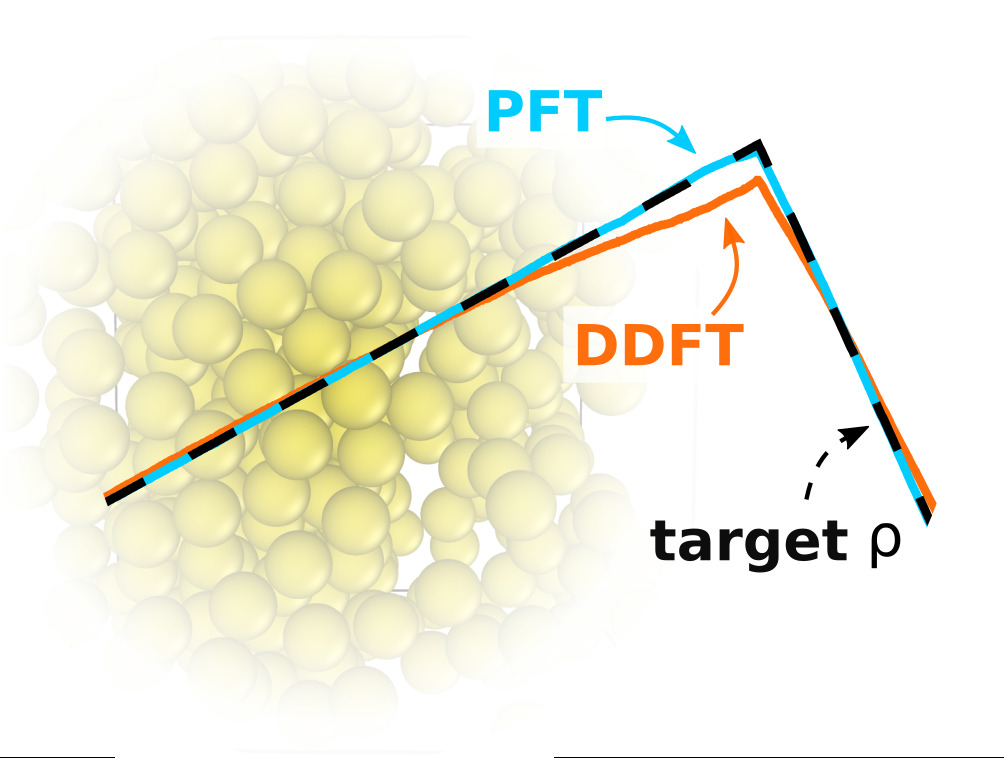Perspective: How to overcome dynamical density functional theory
D. de las Heras, T. Zimmermann, F. Sammüller, S. Hermann, M. Schmidt
J. Phys.: Condens. Matter, 35, 271501, (2023) DOI: 10.1088/1361-648X/accb33
Full text: journal, pdf
Abstract:
We argue in favour of developing a comprehensive dynamical theory for rationalizing, predicting, designing, and machine learning nonequilibrium phenomena that occur in soft matter. To give guidance for navigating the theoretical and practical challenges that lie ahead, we discuss and exemplify the limitations of dynamical density functional theory (DDFT). Instead of the implied adiabatic sequence of equilibrium states that this approach provides as a makeshift for the true time evolution, we posit that the pending theoretical tasks lie in developing a systematic understanding of the dynamical functional relationships that govern the genuine nonequilibrium physics. While static density functional theory gives a comprehensive account of the equilibrium properties of many-body systems, we argue that power functional theory is the only present contender to shed similar insights into nonequilibrium dynamics, including the recognition and implementation of exact sum rules that result from the Noether theorem. As a demonstration of the power functional point of view, we consider an idealized steady sedimentation flow of the three-dimensional Lennard-Jones fluid and machine-learn the kinematic map from the mean motion to the internal force field. The trained model is capable of both predicting and designing the steady state dynamics universally for various target density modulations. This demonstrates the significant potential of using such techniques in nonequilibrium many-body physics and overcomes both the conceptual constraints of DDFT as well as the limited availability of its analytical functional approximations.
Additional material/comments:

Download the full text for this article: journal, pdf
Related publications:
1 Velocity gradient power functional for Brownian dynamics (+ info)
2 Structural Nonequilibrium Forces in Driven Colloidal Systems (+ info)
3 Flow and structure in nonequilibrium Brownian many-body systems (+ info)
